




02
From the Director’s Desk
A tribute to Georgia Elmes Welles and some thoughts on going back to basics with director Adam Levine
06 Inside the Issue
The foundation has been laid. Who will be honored, and how?
08
A New Vision For People & Talent
Discussing reimagined approaches to cultivating a museum’s most important resource: its people
12
In the Studio: Osinachi & Yusuf Lateef
Introducing our newest residency with one of the world’s leading digital artists and an accomplished local painter
20
Restoring the Piece
TMA’s Adopt an Artwork program gives supporters a peek at what it takes to preserve the collection
22
Leading the Way Forward
Key takeaways from TMA’s landmark symposium bringing together museums across the country
24 Caravaggio in Toledo
Admiring an Italian master and his unsurpassed dramatism in a focused exhibition
32
On View & Upcoming
Explore a captivating season of exhibitions and gallery installations
34
Museum Store Spotlight
The debut of the 2023 TMA Holiday Goblet by glass artist Alan Iwamura
36
Art Classes for All
A sample of the incredible handson experiences for participants of all ages and skill levels
Before I begin this update, I would be remiss in not acknowledging and mourning the recent loss of Georgia E. Welles, a passionate arts advocate, extraordinary collector, and inimitable philanthropist whose deeply held commitment to the transformative power of art enriched the entire northwest Ohio region in profound ways.
Georgia’s love for the arts led her and her husband David to become dedicated collectors.
Over five decades, they amassed an impressive art collection, generously gifting many significant works to the museum. In honor of their unwavering commitment to the arts, the museum dedicated the Georgia and David K. Welles Sculpture Garden in 2001, housing numerous works that once adorned their beautiful property. Just last year, Georgia announced the most significant addition of modern and contemporary art in the museum’s 122-year history.
Georgia’s devotion extended far beyond her role as a collector. Her visionary leadership led to the establishment of the Apollo Society in 1986, a donor group dedicated to funding acquisitions for the museum’s collections. Thanks to her efforts, over $10 million in contributions have been raised, resulting in the acquisition of more than 70 artworks spanning various areas of the museum; in 2017, the group was renamed the Georgia Welles Apollo Society to reflect her significant contribution. Georgia and David also led the remarkable $60 million campaign that funded the construction of the museum’s renowned Glass Pavilion.
The pride this community feels in this museum—the pride we so often (and rightly) vest in the Libbeys—should be equally conferred on Georgia and David Welles. Georgia perpetuated the greatness of the Toledo Museum of Art for another generation. It comes to us to honor and continue this legacy. She will never be replaced, and she will be sorely missed.
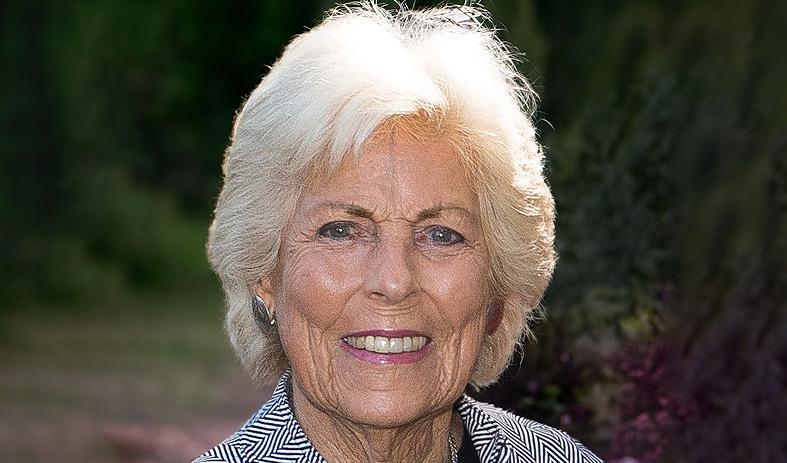
During my recent travels, I thought often about the idea of basics—the things we know and cherish, the dependable elements in our lives we return to again and again to find satisfaction.
Nearly 4,000 miles away, I met with TMA admirers in London, learning what impressed them most about our museum. They discussed everything from the juvenile justice program through the Glass Pavilion’s Hot Shop to the glimpses into ancient Rome and Persia on view in the Classic Court.
In these conversations, I realized our international partners and supporters identified two of TMA’s most marked characteristics: its community-first orientation and its exceptional collection. These have been hallmarks of the museum since its founding in 1901.
These are the basics, the building blocks, of what TMA has always done. This museum makes superlative works of art accessible to all people to learn from and enjoy. They are the ever-present parts of its identity that make it reliably beloved by so many. These core ideas—community and quality— help form the foundation of our strategic plan in 2023, more than a century since the museum’s founding. The pillars remain the same even while we evolve to respond to the times.
That evolution in approach is on view throughout this season. We have launched a new digital artist residency, which builds off of successful past residencies with Jim Dine, Albert Paley, Therman Statom, and the 50-odd artists that have participated in the Guest
Artist Pavilion Project (GAPP). The new residency’s inaugural artist is no stranger to claiming “firsts”: Osinachi, a Nigeria native who was named one of Africa’s 100 most influential people in 2022, was one of the earliest artists on the continent to attach his digital works to the blockchain, and the first contemporary African artist to have a blockchain-based artwork sold at Christie’s. Incredibly, his vibrant compositions are created within a computer program that most everyone uses but in which few could fathom producing artwork: Microsoft Word. His works are literal digital paintings that display a level of craft that boggles the mind and bare a sensitivity to people that intrigues deeply.
The themes Osinachi explores in his work are not new. But the methods for safeguarding the uniqueness of digital creations are expanding, and Osinachi is one of a number of creators pioneering in this new territory. He’s spent time bringing that knowledge to Toledo, creating works on site, exploring the collection, and engaging in dialogue with local artists, including Yusuf Lateef. We interview both Osinachi and Yusuf for their perspectives in our In The Studio Q&As; we also share on page 14 how community members can get involved in the residency by contributing to a forthcoming digital artwork inspired by Toledo.
Of course, a museum’s role is not only to look forward, but to look back. Opening January 20, The Brilliance of Caravaggio: Four Paintings in Focus will mark the first time in more than a decade that four paintings by the legendary Italian artist have been
on view together in the United States and only the second showing of Caravaggio’s work at TMA. Caravaggio’s theatrical, dramatic works have inspired generations of artists, many of whom are part of TMA’s collection. The focused exhibition will be an incredible opportunity to see a virtuoso’s work up close and also trace his influence through the Caravaggesque paintings that will be on view alongside them.
In Africa Unmasked: The Art of the Continent across Time and Space, now open in Gallery 1, we explore 65 years of African art collecting and exhibiting at TMA. The new installation, which showcases 13 exemplary works, includes art from across the continent, across time, and across media, giving a sense of the quality and diversity of artistic production across millennia. This collection is now reinstalled, thanks to the efforts of the first dedicated curator of African Art in the institution’s history, Lanisa Kitchiner.
We’re celebrating the creativity of the artists on our team, as well—many artists have made the museum a part of their career over the years. Since glass artist Alan Iwamura relocated from Brooklyn to Toledo in 2016, he has been the artist behind the museum’s annual holiday goblet. This yearly tradition is uniquely Toledo in its homage to local and international glass history.
As always, thank you for your membership and support, without which none of these experiences would be possible.
Sincerely,
Adam Levine










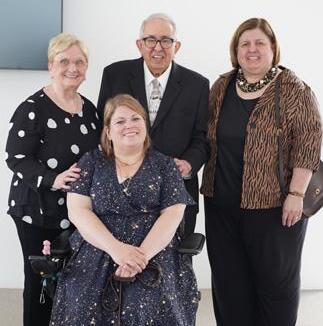
In over a century of existence, it’s natural that the Toledo Museum of Art would develop many traditions. How they are interpreted in each decade is a reflection of the times, as well as of the team putting them into practice.
Perhaps it is helpful to think of tradition not as a confine, but a foundation—important precedents we take as learnings, incorporating as we grow and evolve.
Traditions are meaningful only insofar as they advance the people honoring them. That’s why people are so essential to the museum; not only the thousands of visitors who come through its doors, but the 250 people who power the museum’s operations, from the small details of the day-to-day to the big ideas required to devise approaches to engaging superlative artwork with our community.
How that team is developed and nurtured, then, is essential to keeping tradition not only alive, but relevant. Drawing great minds to join our staff and fostering an environment where they can execute new ideas strengthens our institution and our community.
It’s this idea that helps inform our work with TMA’s inaugural
People and Talent team, which includes many firsts: our first Chief People and Culture Officer, Jennifer McCary, as well as our first Manager of Access Initiatives, Katie Shelley, and first Director of People and Talent, Debra Ball.
Our People and Talent colleagues share some of the big ideas they’re bringing to making the Toledo Museum of Art an employer of choice in this issue’s Roundtable, our biannual discussion pulling back the curtain on what makes TMA tick. It’s a space we’ve developed in Art Matters to share more of the thinking behind exhibitions, hiring practices, acquisitions, and more.
“I think these developments are the obvious next step in the work of creating a culture of belonging,” Shelley shared. “Whether it’s the people outside in our community or the people inside making things happen, people have to be the focus for us to achieve our strategic plan.”
The people who make up the museum’s team are behind all of the ideas in this issue. They’re taking traditions and making them their own, whether engaging with living artists (in our new digital artist residency); exploring new
and truer ways of representing art history’s scope (as in the Expanding Horizons symposium, which brought together not only our team but many museum teams from around the country); and in exhibitions that inspire awe in us (the Caravaggios are coming!).
Adapting the basics to the 21st century is a focus of our year and our strategic plan as a whole. It’s inspired learning and growth, and like all evolutions, some challenges, too. We hope to keep sharing it with you, and our members, visitors, and supporters. And we hope it inspires as much learning and delight for you as it has for us.
Panelists
Debra Ball
Director, People and TalentJennifer McCary
Chief People and Culture OfficerKatie Shelley
Conda Family Manager of Access InitiativesArt Matters
Gary Gonya
Director of Brand StrategyPeter Drucker, the godfather of management consulting and the founder of the Boston Consulting Group, famously said “Culture eats strategy for breakfast.”
Studies back it up: actively disengaged employees cost the US economy between $450 and $550 billion in lost productivity each year, according to Gallup research. One McKinsey study shows that employees who feel connected to their work are 32 percent more committed to their jobs and perform 16 percent better. The data tell us what we might intuit already: that an engaged workforce outperforms an underengaged one.
The museum has retooled its team and approach to culture, talent, and accessibility in recent years, aiming to strengthen its ability to fulfill its mission through people, engaged with our mission and connected with each other and our community. Art Matters sat down with the new staff members leading TMA’s efforts (at the helm of what was formerly human resources) to learn what’s next for the institution’s nearly 250-person team.
Art Matters: Welcome, everyone. Let’s talk about who’s here’s at the roundtable and why.
Jennifer: Actually, all of us on the panel are occupying new or re-envisioned positions at TMA, roles that were born out of the strategic plan. Its focus is on achieving community as much for our internal team as for our visitors. Our goal is a productive and inclusive culture of excellence that becomes a core reason people want to join and stay with our team. That’s why our roles were developed: to oversee people, culture, talent, and access across the workplace.
Art Matters: Let’s define some key terms, such as “people,” “talent,” and “culture,” because
those are new to TMA. Is there a deeper meaning here?
Jennifer: It absolutely has a ton of meaning. People are our greatest asset, and when it came down to it, we put a lot of effort into the visitor experience, but we wanted to continue to be more intentional about the experiences of people working here as they serve our visitors. These new terms are about paying more attention to what our team was feeling and experiencing. It’s also us asking the question, what does it mean to have a strong and healthy organizational culture? And what are our goals when it comes to our people? When we thought about that new perspective, it made sense to introduce new terminology to match it.
Debra: The HR function had been evolving for years, and that just accelerated, with people fundamentally rethinking recruiting, retaining, and developing people. In a post-pandemic environment, so many organizations are really reevaluating the employee value proposition to better define meaningful work—trust, transparency, inclusion, and caring matter most. This new
terminology reinforces our effort to be intentional about our plans and our actions.
Katie: My position was the first of the team to be developed, and for the past couple years my focus was on accessibility and inclusivity for visitors. Now that we’ve been able to make progress there, I’m looking forward to transitioning to staff members, working on creating a museum that is maximally accessible and inclusive to all of them, too. The aim is to recruit, retain, and empower the best staff regardless of ability or accommodation. We want staff to feel empowered and comfortable to come to their workplace, to bring their full selves and to feel supported in getting their needs met so they can do their best work.
Art Matters: What’s the distinction between managing people and managing talent?
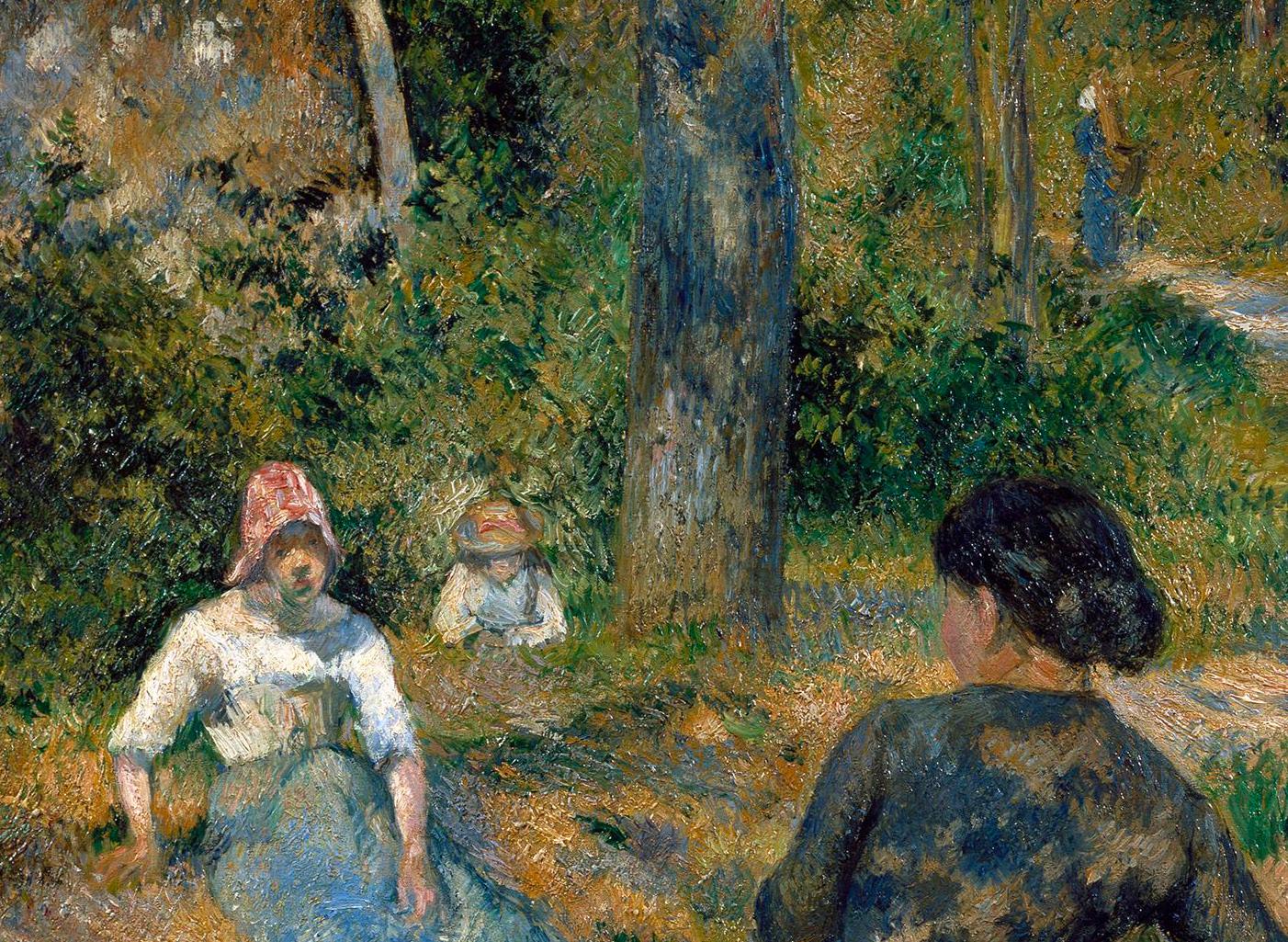
Jennifer: The “people” part addresses the fact that each person here is valued and that they’re valuable. We want people to feel confident in being their whole and authentic selves at work. The “talent” piece is what each person brings: a skill set, a diversity of perspectives, that we want to tap into and hone. And so that’s the real distinction—that when we talk about people, we’re talking about the individuals who are going through our halls each day, but when we talk about talent, we’re talking about the things that they bring and how we also serve them in return. It’s about thinking through how we as an employer
can help our team accomplish their goals, establish their dreams, and work toward their future, in return for their talents.
Art Matters: So why is this evolution to People and Talent relevant and necessary right now at the Toledo Museum of Art?
Katie: I think these developments are the obvious next step in the work of creating a culture of belonging. Whether it’s the people outside in our community or the people inside making things happen, people must be the focus for us to achieve our strategic plan.
Jennifer: Culture emerges from what people believe, what they say and do collectively. Without a healthy organizational culture, you can’t achieve belonging. So
another reason I think that this all came together and is so relevant now, is because we have to start to focus on what is the organizational culture that will characterize who we are as a museum and how people will experience working here. It’s essential to our goal of becoming an employer of choice.
Art Matters: Traditionally HR handles hiring, pay, training, and benefits. In this new approach, how are these basic elements being addressed or reinvented?
Debra: We’re really rethinking pay equity and how we measure up nationally. Pay grades were established, and now we have more transparency around where people are within their salaries. We have external transparency too— when positions are advertised we give people a sense of the low to high range of the pay. A lot of those efforts started before this team was even formed, which is really great. It’s definitely a journey, one that partly has to do with the financial wherewithal of an
organization and how quickly we can get there.
Jennifer: With training, we are approaching it now more in terms of development. We’ve rolled out quite a few new or revised opportunities for growth, including courses for bystander intervention, management, and leadership. It’s a benefit of working here, something that would be attractive for someone to say, “Hey, they’ve got these development offerings here as a way to not only advance, but also to become stronger in my role.”
Art Matters: What’s your vision for creating a truly accessible employee experience?
Katie: First of all, [staff should feel] a sense that everyone feels comfortable asking for assistance from their workplace, and that we are able to provide them tools to work the best possible way within their work environment. Then once they’re able to access the accommodation to work more effectively, to continue to get the
word out there to people that might be looking to hire, that we are an accessible and inclusive employer, and if you are someone with a disability that’s looking for a position, you might want to look at the Toledo Museum of Art.

Something that has really started to grow, and COVID-19 pushed a lot of this into the forefront, is the ability to work from home, remotely, and having more technology available because of the pandemic to assist with workplace accommodations. It really has made this whole area grow exponentially just within the last three years.
Art Matters: When we say “an accommodation,” what does that look like?
Katie: It depends on the disability – that’s another thing too. Not everybody feels comfortable acknowledging disability. We have to meet people where they are, in terms of how they identify. An accommodation might be
working remotely because you’re immune-compromised. Or you might be unable to type or use your hands to use the keyboard and mouse, so you need voiceto-text technology. It’s not just what we can perceive physically;
feel natural and expected, not like an imposition or special exception.
Art Matters: Are you aiming to be named one of the top employers in the city or the state?
Jennifer: It’s a goal, absolutely. Those milestones can be an important celebration of the work ethic we are promoting.
Debra: Employer of choice is very aspirational. It’s a very dynamic process and once you get on the list, there’s a body of work needed in order to maintain and sustain it. One measure I tend to really like is when employees are asked by a third party, “how are we doing?” I like seeing those results measured against other organizations. It helps in two ways—you see how engaged the team is and also how healthy the culture is. Succeeding on those assessments is its own recognition.
Art Matters: What do you see as the real strengths of the Toledo Museum of Art’s culture?
Katie: From my perspective, and especially in my position, I haven’t come across one person in this organization who hasn’t been completely on board to help me make TMA more accessible. I think people want to do what’s best, not just for the Toledo community at large but also for people who work within the museum. They really care about the place that they work for, and it’s made my job that much easier, because if I had to explain why we’re working to make the museum more accessible, I don’t think I would’ve had the success I’ve had thus far. Our staff is willing to learn and willing to grow. I see that within our culture and organization, and it’s a huge strength.
someone neurodiverse may work really well as long as they have a quiet office setting, so providing them with a space where they can work independently so that they’re not distracted would be another example of an accommodation.
Jennifer: We have done some basic things like making sure we have screen readers available, or when we’re in events, that we are using microphones.
Katie: The microphones are a good example. It doesn’t have to be anything bank-breaking or really profound; oftentimes accommodations can be really simple. It’s just knowing what’s effective for the person and knowing how to best implement what they need. And most importantly, making the request
Art Matters: What would success look like under this new approach?
Debra: From a leadership perspective, it would be that change doesn’t necessarily require positional authority. Every employee no matter where they are would view themselves as able to lead change. In that way the organization grows as a whole. Another thing that I would really hope that all of our employees would aspire to and embrace holistically is inclusive thinking, that we come to whatever needs to get done with the notion that “my idea becomes a better idea when I share it with others. Here’s my idea, I’m lightly holding it, how can we make this idea better?” That’s what I would hope for, that kind of design thinking.
Jennifer: We have over 20 employees who’ve been here 20-plus years, many of them over 30 years. There are not a lot of organizations who can say they have that many people who have been at one place for so long. And that speaks to what it means to be loyal to our organization, to find professional joy within an organization, and it tells you that there’s a lot of strength in the culture when so many people have stayed. That type of crossgenerational learning doesn’t happen in a lot of spaces, but that’s something we have here. That’s a real strength.
[TMA staff] is willing to learn and willing to grow. I see that within our culture and organization, and it’s a huge strength.
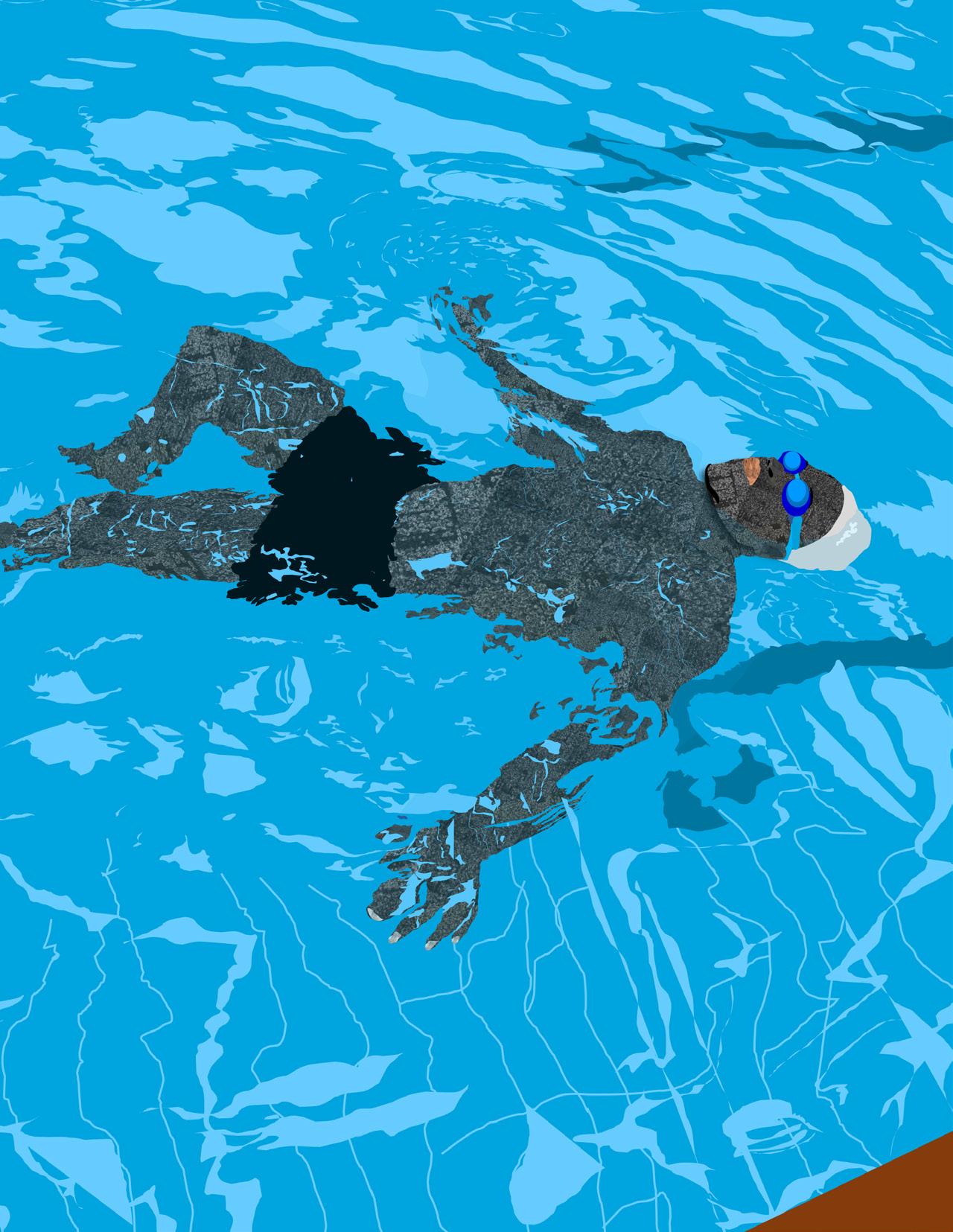
Osinachi and Toledo multimedia artist Yusuf Lateef
Painting from inside his Lagos home studio, the 32-year-old Osinachi sits not in front of a canvas and brushes, but instead fires up the HP Spectre laptop he’s owned since 2020. He conjures up vibrant and colorful scenes, expanding what is possible inside one of the simplest programs he has: Microsoft Word.
The one-named artist (born Prince Jacon Osinachi Igwe) is at the center of TMA’s inaugural Digital Artist Residency, a program meant to engage digital artists with the collection and the community. He’ll create, mentor, and collaborate with local artists, and share his knowledge with the Toledo community. He spoke with Art Matters about the tools he uses,
his efforts to make space for other creators, and his hopes for the residency’s impact.
Art Matters: We might think of digital media as somehow limitless in a way that physical materials can’t be. But you use Microsoft Word, a program with many limits. Why work there?
Osinachi: I started using Microsoft Word about 17 years ago. Internet cafes were just starting to spring up in Aba, Nigeria, the city where I grew up. At the time I was doing some writing—badly written poetry, badly written short stories [laughs]—and naturally, I would type on Microsoft Word. I wanted to create illustrations of what I was writing, and that was how I started playing around with the drawing tools. I thought since the program
had that feature that maybe it was meant for illustrations, too. Painting in Word became the best way for me to tell my story, instead of writing. I didn’t choose it; it was basically what was available to me in Aba. Now I enjoy pushing those limitations.
AM: For the Africa Here project you curated in 2022, there was an onboarding of more than 70 African-born artists to the MakersPlace NFT marketplace. Why do you think it’s important for artists to get their work online?
O: It comes from my own experience trying to find representation or to be taken seriously in the art world. I remembered when I started reaching out to galleries, around 2015/2016, the reply would always
The Toledo Museum of Art will offer 10,000 visitors a free digital artwork created in a collaboration between Osinachi, Yusuf Lateef, and Toledo community members.

Visitors will receive the artwork as a kind of token of their visit to the museum—a memorabilia-like item similar to something you might get at a concert to remember your experience. Beyond the first 10,000 free tokens, there will be art for sale at accessible prices, followed by an auction for the two artists’ creations at Christie’s.
The drops are part of TMA’s Digital Artist Residency, the first time the museum has brought together international digital artists with local artists for a creative exchange focused on new online tools.
“The program itself is meant to be experimental in nature, partly bridging these two art worlds that haven’t been connected, museums and the digital art world,” said Calvin Burchfiel, TMA’s Web3 Programs Specialist. “More specifically, on this project with Osinachi, we wanted to dial into the community aspects by making art that is accessible for visitors to own.”
To access the works, visitors will need to register in person at a TMA Information Desk. For more information or to participate in creating the 10,000 works, visit tmalabs. toledomuseum.org.
be “Yes, we love your work, but it’s digital.” There were issues around digital art, things like proof of scarcity, proof of authorship, etc. When blockchain emerged,
the work in that series, Different Shades of Water?
naturally it empowered digital artists. I was in the right place at the right time; in some ways, being the first African artist in the NFT [non-fungible token] space made me what I am today. But now there is a lot more noise, and many actors, some of them bad, which means it’s more difficult for artists to break in. I’ve had African artists, especially from my home country of Nigeria, reaching out to say they want to get onto curated platforms, where collectors have more trust. Too often those African artists are told “no”; our collaboration for Africa Here helped them gain entry. What I’m trying to do with my curation is avoid the biased mistakes that were made in the contemporary art world, and to have instead some kind of balance in terms of the stories being told and the artists being spotlighted.
AM: Yours was the first NFT by a contemporary African artist to be sold by Christie’s. What inspired
O: I thought to myself, David Hockney, the British artist, has created these amazing pool paintings, and they are beautiful to look at. How would it feel to create something similar and digitally, to create believable water bodies in different shades? At the end of the day, it was not just about engaging with David Hockney, it was about pushing Microsoft Word. People of color came to me and said it speaks to their experience of the Black body in a pool. That’s a conversation that’s still really relevant in the Black community, so it spoke to things that were also beyond the technique of creating the work, issues around racism and segregation.
AM: How did your time in the TMA residency and your work with local artists influence you?
O: One of the big things that I got to do here is translating one of my digital works to stained glass. It’s my first physical piece, and working with the folks at the Glass Pavilion, they were eager to help actualize it and wonderful to work with. My experiences here are feeding into my work.
AM: What do you hope comes out of the residency?
O: I’ve had the privilege of engaging with members of the community and with young people through the school outreach we did, but beyond this, people should look forward to the series of digital artworks that will be created and used for engagement between
the museum and the community, even beyond Toledo. One of the things that I want people to take away from what we are doing is that they should understand what NFTs are, and their place in the contemporary art world. I’m hoping that museums across the world will take what we have done in the residency and replicate it, while giving digital artists their rightful place in conversations. Institutions like museums have a responsibility to spotlight what is happening today in digital art, because “digital” will ultimately be seen as traditional, the norm, in the future.
just using completely different processes and spaces. I invited Osinachi to my studio, and I remember looking at him and thinking he’s got the same thing going on, but it’s in files on his laptop. To have stuff around you, the smell of dirty paint water, it’s a different experience.
AM: Why did you decide to participate in the residency?
that to make me complacent or repetitive in my creative output.
AM: What was the cultural exchange like between an artist from Lagos like Osinachi and an artist from Toledo like you?
Multimedia artist Yusuf Lateef’s work is his own vehicle for selfreflection, growth, and outward change in his community. As co-founder of Radiant City Arts and later the Toledo Black Artist Coalition, the local artist is an advocate of cultural exchanges who pursues projects that both facilitate conversation and promote new ideas. Lateef is the first local artist to participate as a mentee and collaborator in the new TMA Digital Artist Residency, where he’ll learn how digital tools could impact his artistic practice.

Art Matters: You work with tangible, weighty materials; Osinachi’s works live in the digital world. Where does your work intersect?
Yusuf Lateef: Both of us are bending light in a certain way,
YL: I’m an artist that works with materials with texture most times. But I’m not married to those materials. I want to play around with different modes of working, so it has felt like a really perfect opportunity to explore and learn about digital art and the Web3 space. I’m always running from the idea of becoming a brand, so to protect myself from that I put myself in spaces I don’t understand and give myself the opportunity to explore something new.
AM: Why do you resist being a brand?
YL: I think it’s the weird thing of artists running from monetizing their work and at the same time having to earn a living. I don’t want
YL: I think my first question was— where do I take this brother to eat? [Laughs] I took him to this spot called Jamaican Spice, right on the corner of Dorr and Byrne, in a gas station. Within minutes we were elbows deep in oxtail and rice and chicken that’s falling off the bone. But really, our exchange is a very personal connection that’s tied to something much more vast. We discuss our different languages of art and really seeing through someone else’s eyes. We talk about empathy a lot, too, especially in the context of sharing our work.
AM: What’s the significance of the residency for local artists?
YL: I look at Toledo as a living room, and everything in your living room is really familiar to you; if anything got altered, you would know. But when you invite people into those spaces, they’re not those same spaces anymore, because they have new context. You expand the value of your living room, and it’s not necessarily in material things but in the conversations that happen. Now you get to see your city from new vantage points.

Winter Night
Everett Shinn (American, 1876–1953). 1903. H: 20 1/2 in.; W: 21 3/4 in. Pastel and watercolor on board. Museum Purchase, 1950.296
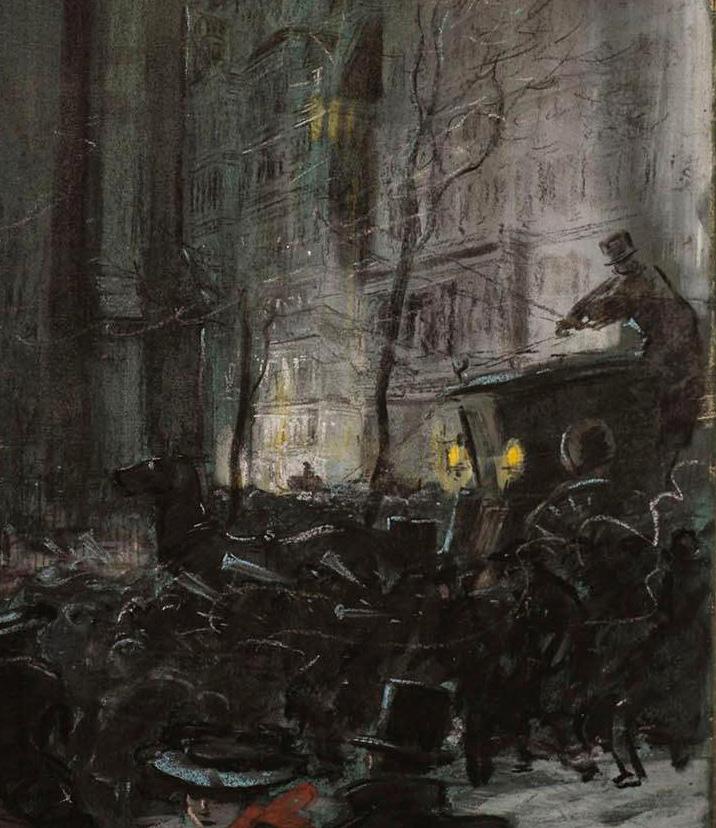
When the Libbey glass dress debuted at the World’s Fair in Chicago in 1893, it was a main attraction, with audiences marveling at its twinkling delicacy. Iterations of the gown were worn by the trendsetting ladies of the day—namely Infanta Eulalia, then the princess of Spain, and Georgia Cayvan, a popular stage actress of the late 19th century.
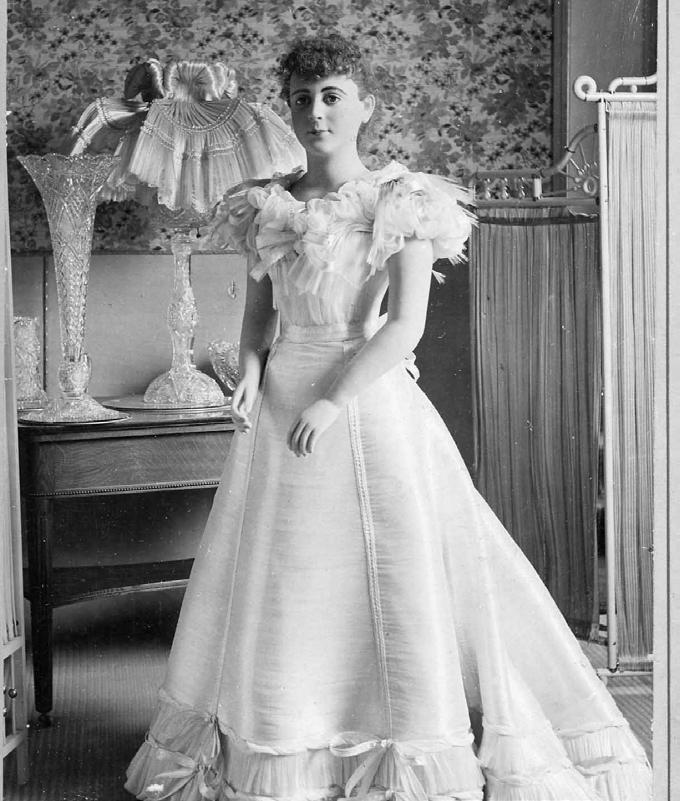
That glass shimmer took countless hours to achieve—nearly 37 just to pull the 1,900 miles of continuous filament. It will take even more hours to restore it.
The Libbey glass dress is just one of nearly 30 works of art in the Toledo Museum of Art’s collection that have been up for “adoption” since 2021, when the Adopt an Artwork program launched. Art enthusiasts can donate, as individuals or as part of a group, to a conservation fund that supports the vital preservation work required to maintain the TMA collection.
Participants are rewarded with unique behind-the-scenes access to conservators’ work: a peek at the tools (some as simple as q-tips and others as complicated as an x-ray) and the team members who wield them to keep the collection in good condition.
Some of the works even appeared in a 2022 exhibition, State of the Art: Revealing Works From the Conservation Vault, where visitors got to see the potential “adoptees” up close and in person.
“It’s been exciting for us to share the process of what we do and how we care for the artworks with the public,” said Marissa Stevenson, assistant conservator of textile-based collections.
TMA enthusiasts from around the country are
“adopting” artworks in the museum’s collection, helping fund vital conservation workpostcard image showing the Libbey Glass Dress, about 1893
“Contributors get a really unique experience: to come to the labs, meet with the conservators on the project, and experience the intimate relationship we have with these artworks.”
In the case of the Libbey glass dress, nearly $25,000 was raised by a crowdfunding campaign, half of which was provided by a generous donation from local company Libbey Glass. It will be used in part to support the intensive research and analysis required to understand how to repair some of the glass fibers of the dress, which have become brittle and broken into tiny shards. The silk has also deteriorated, fibers breaking along the weave, so the weight of the skirt is now too much for the remaining fibers to support.
“The Libbey glass dress has what we would call in conservation inherent vice– issues that we can credit to the material and how it was made,” Stevenson said.
“We want to move forward in the best possible way, so next year we will be investigating these materiality issues from a scientific standpoint and understanding the construction of the piece.”
Other works that have been adopted include Gashkibidaagan, a ceremonial beaded Ojibwe bag dated between 1893 and 1911. The museum’s conservators will use the $4,000 donation to work with Ojibwe community members to determine the best course of action for cleaning engrained dirt in the beadwork and repairing wear along the bag’s wool and silk trim.
Among the works of art still available for adoption are the Randolph Rogers sculpture Ruth Gleaning (created after 1853, with a pinky finger in need of repair) and Figured and Fancy Coverlet, woven by Samuel Butterfield in 1837 (a victim of insects and fluctuating environmental conditions when it was a household object).
TMA enthusiasts around the country have gotten involved with the Adopt an Artwork project, according to Kate Bresnan Messa, the museum’s membership and annual campaign manager.
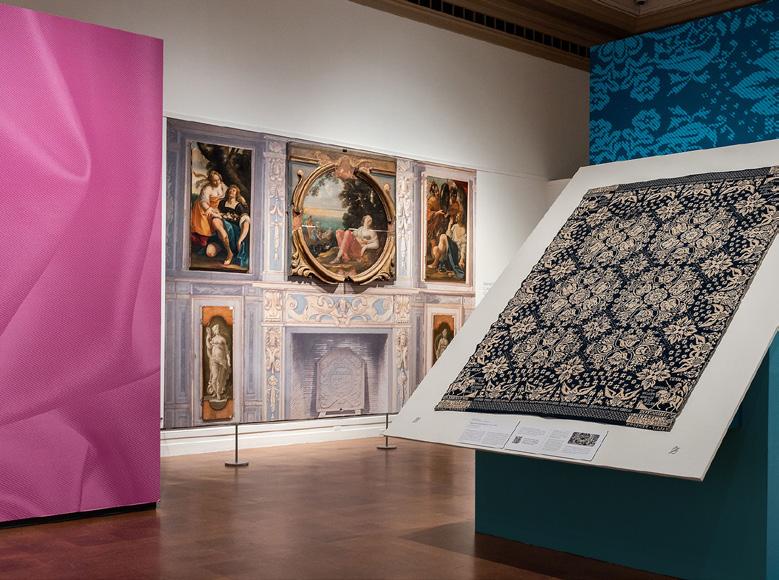
“We’ve had TMA supporters at every level, living around the country, choose to support and adopt an artwork, from email subscribers all the way up to board members,” Bresnan Messa said. “One of the things that’s been even more interesting is people doing repeat adoptions, because they’ve enjoyed the experience so much and want an opportunity to learn about a different area of the collection up close.”
Participants get a color photo with the adopted object and
recognition as the adoptive sponsor on the gallery label, good for five years, in addition to the meeting with TMA’s conservators.
The urge to get a glimpse behind the curtain is one Stevenson, who spends her days working behind the proverbial curtain, understands.
“As silly as it sounds, every time there was a door open that wasn’t normally open when I was a visitor, I was peeking,” Stevenson said. “So I can understand the feeling of wanting to see what we do here. That’s what makes it a really special program.”
For more information on the program and to learn more about adopting an artwork, visit toledomuseum.org/art/adopt
The growing reinstallation movement in museums was the focus for about 300 inperson and virtual attendees at the Toledo Museum of Art’s symposium “Expanding Horizons: New Approaches in Display and Interpretation.”
The symposium, held on July 21, 2023, in the Glass Pavilion, created a space for colleagues to share knowledge, experiences, and ideas around displaying and interpreting collections in the 21st century. Speakers from museums

around the country, including the Los Angeles County Museum of Art, the Denver Art Museum, North Carolina Museum of Art, and TMA, shared insights into their reinstallation projects.
The symposium coincided with TMA’s reinterpretation of part of its American collection, currently on view in Expanding Horizons: The Evolving Character of a Nation. The long-term exhibition frames American art in new contexts, exploring different ways to interpret works from varied media
and time periods in dialogue with each other. Audience engagement is a large part of the installation, as visitor feedback and the reception of different methods of interpretation will help inform periodic updates to Expanding Horizons as well as the museum’s planned 2027 reinstallation.
“The symposium exceeded our expectations, with some 68 institutions represented,” said Robert Schindler, the William Hutton Curator of European Art and one of the gathering’s organizers. “It was a day of excellent talks and fruitful conversations, and we were proud of the outstanding feedback we received—one attendee said it was one of the best professional gatherings she’d attended.”
Key takeaways from the symposium include some of the changes museums are beginning to adopt:
1. Museums are putting into practice different and inclusive approaches to presenting their collections. The need to include who and what has been excluded or marginalized in the traditional story of art history is one of the key intentions behind the growing movement toward more representative approaches.
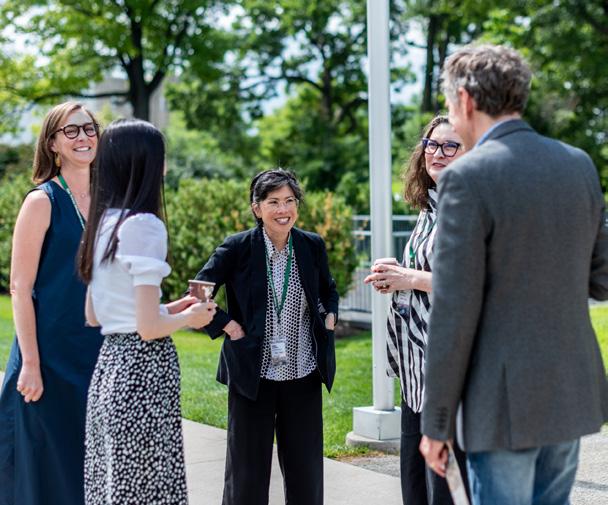
2. Curators and educators are collaborating more. Museums’ art historical experts and their learning and interpretation colleagues are partnering up to develop more engaging installations. The progression toward more holistic collaboration is part of efforts to think about ways the display and interpretation of art can be more relevant to a broader audience.
3. Museums are engaging in more dialogue with their communities. One speaker spoke of the transition “from
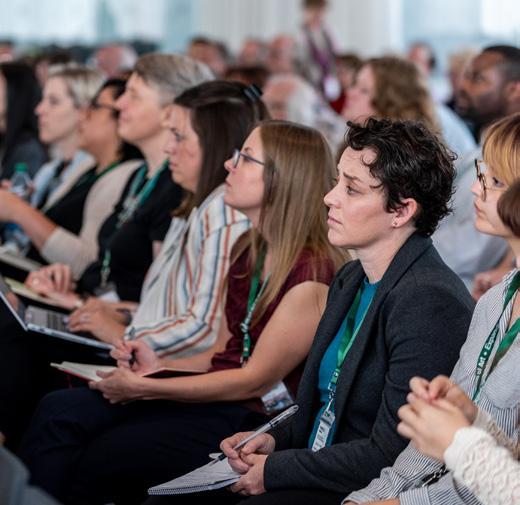
temple to forum”: museums are beginning to move away from the idea of curators as educators engaged in a one-way conversation. Focus groups and other ways of gathering visitor input are becoming foundational to the way reinstallations are managed, with those who hold their museums as beloved parts of their community—and, crucially, those who have not traditionally felt invited or welcomed to art museums—contributing ideas and feedback on content and design development.
4. There is still a lot to be discovered. Curators, educators, and community members are together reexamining the meaning of objects in ways that can lead to uncovering new, more complete understandings of a work of art. One speaker shared how a Native American object in their collection had been misunderstood for years as a peace offering between
Indigenous tribal communities and settlers; in conversation with a Kwakwaka’wakw artist the curatorial team discovered it actually symbolized protest. With museums growing more inclusive, they are also inviting different people who bring different backgrounds and knowledge to their work, helping challenge biases. “With expanding and more diverse stakeholders,” Schindler said, “you bring in people with different frameworks and experiences, and you can see objects from different perspectives.”
To learn more about symposium speakers or access links about the Expanding Horizons exhibition, visit toledomuseum.org/ symposium.

Louise Nevelson (American, 1899–1988). July 1961.
H: 116 3/8 in. (295.5 cm); W: 244 1/4 in. (620.4 cm);

A new exhibition brings the master Italian painter’s influence into focus
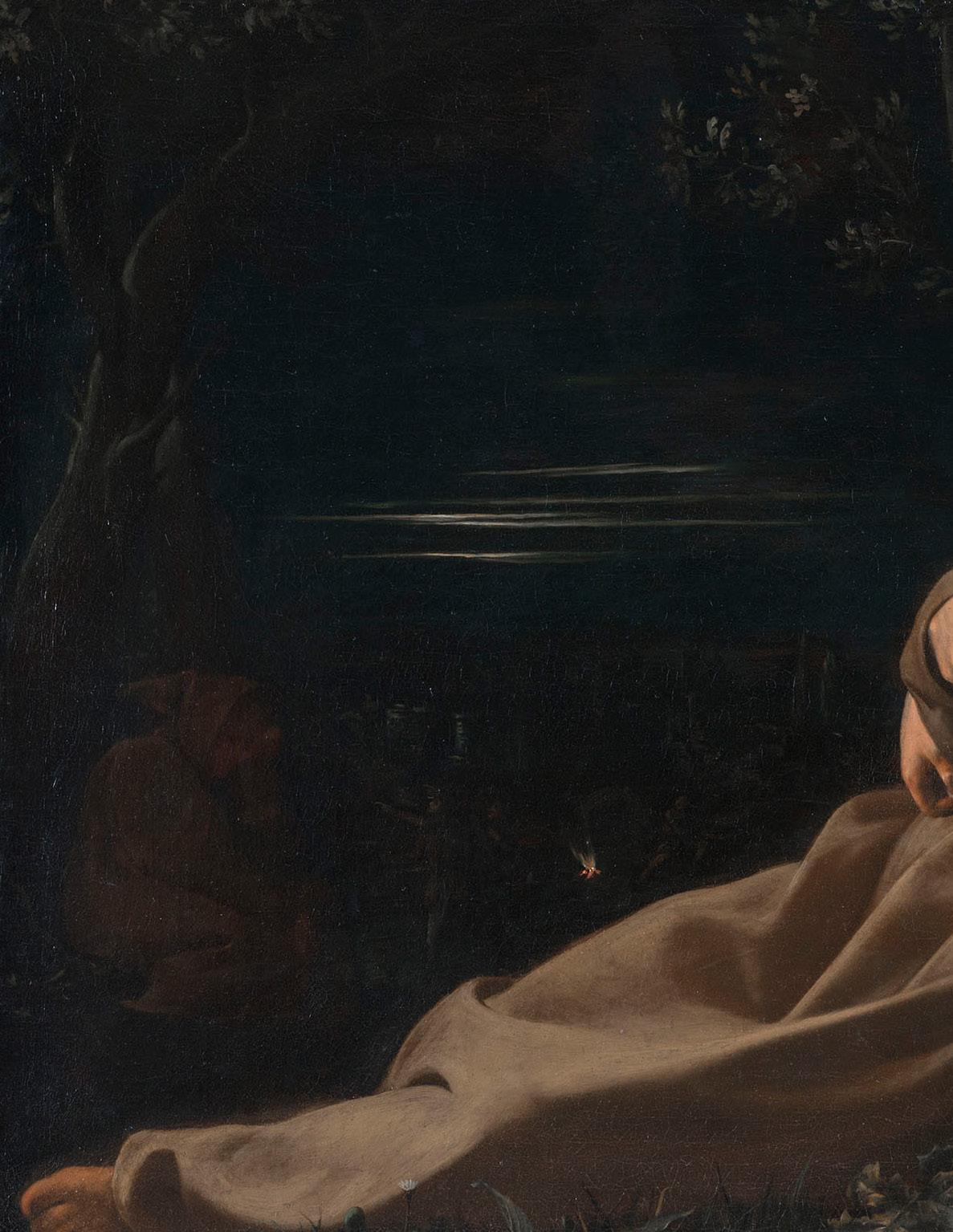
Caravaggio (Michelangelo Merisi) Italian, 1571-1610, Saint Francis of Assisi in Ecstasy , c. 1595-96, Oil on canvas, 37 x 51 in. (94 x 129.5 cm), Wadsworth Atheneum Museum of Art, Hartford, CT, The Ella Gallup Sumner and Mary Catlin Sumner Collection Fund, 1943.222

Walking around Rome, one of the first things you notice is the light. It bathes every stone in the city in a golden radiance, casting buildings into dramatic, theatrical relief.
When Michelangelo Merisi arrived to the former capital of empire in approximately 1592, he was only 21. How a young novice from northern Italy grew to capture that light and wield it like a superpower is one of the great wonders of Caravaggio, the artist he became.
One can visit Rome 431 years after his arrival and find throngs of people crowded around his paintings, angling for a glimpse. His manipulation of light and shadow, his portrayals of creased flesh, and his uncanny ability to create believable moral conflict on the canvas were cause for his celebrity in the 16th and 17th centuries— and the reason his work still draws admirers today.
“If he wanted to paint a face that was in anguish, he did it so convincingly as to leave no doubt of the emotion in the frame,” said Larry Nichols, curator emeritus and an expert on European painting and sculpture before 1900. “Caravaggio’s skill in capturing emotion and facial expression was stunning, actually unsurpassed.”
The legendary painter’s work and influence will be the subject of the Toledo Museum of Art exhibition The Brilliance of Caravaggio: Four Paintings in Focus, on view January 20 through April 14, 2024 . The exhibition marks only the second showing ever of Caravaggio’s work at the Toledo Museum of Art. (A single composition by the artist was shown at the museum in 1951.)
The scale of the show, which presents four paintings by the master and four paintings by Caravaggisti, artists influenced by his naturalistic style, will allow viewers a more intimate examination of what made Caravaggio’s skill with a brush so remarkable.
“There haven’t been four Caravaggios in one exhibition in the United States, in one building, in at least ten years,” Nichols said. “We’re rather proud of assembling this many of his works in one place in 2024. This show is going to be rewarding and memorable.”
Caravaggio’s commissions were not unlike other artists of his era: ecclesiastical themes, commissioned by cardinals or wealthy patrons, like those seen in Saint Francis of Assisi in Ecstasy (about 1595-96, on loan from the Wadsworth Atheneum in Hartford). It was Caravaggio’s first religious painting, and in it we see the 13th-century saint’s vision of his miraculously receiving the signs of the stigmata, the wounds left in Christ’s body by the Crucifixion. An angel offers spiritual comfort to the recumbent saint.
What set Caravaggio apart, and created something of a sensation, were not necessarily his themes, but his models: the unidealized, natural, wrinkled, and even weary faces of Romans who existed outside the elite circles of the clergy or upper classes. He eschewed the glowing and cherubic portrayals popular at the time for something real, even gritty.
He wasn’t the first to embrace naturalism, but the boldness and skill he brought to the task made him a sensation in the late 1500s. His lovers and friends served as models, occupying saintly scenes with dirty feet. Commissions were rejected and repainted. He worked with a talent for spontaneity that made other artists envious, painting from live figures in his studio directly on the canvas with not much in the way of preparation. (He used dead figures, too, supposedly visiting the morgue to study bloated corpses.)
“Caravaggio’s pursuit of naturalism stood against his contemporaries in Rome at the time, like the masterful Annibale Carracci, who were idealizing,” Nichols said. “Carracci would never paint a dead corpse. He would have idealized death, whereas Carravagio shows a corpse as it is. When he burst on the scene, it shocked people. There are really accounts of people being shocked.”
The artist’s models played saints in his religious-themed works, but they also posed in everyday genre scenes, like in The Cardsharps (about 1595, on loan from the Kimbell Art Museum in Fort Worth). It’s one of Caravaggio’s most highly regarded works, presenting players engaged in a game of primero, a precursor of poker.
It’s painting as psychological drama, as theater, in fine costuming, no less. A cardsharp raises his gloved hand to cue his accomplice. The target of their deceit contemplates his hand, seemingly unaware. More than
four centuries later this everyday tale of morality still demands philosophical contemplation.
“Regardless of what awareness or experience the visitor brings to the moment of looking at Caravaggio, because of his storytelling abilities, the viewer still gets it—people immediately understand what he has painted,” Nichols said. “It prompts a conversation with yourself: do I recognize right from wrong, how do I come down on this scene? The audience is confronted with an awareness of Caravaggio’s larger topics and thinking back to all the cheating we face today, on everything from our income taxes to our relationships.”
It is a dichotomy worth finally noting: a man who painted moral conundrums so clearly existed in his own state of ethical turbulence. (For those already enthralled
by Caravaggio, this is the juicy personal life part you already knew.)
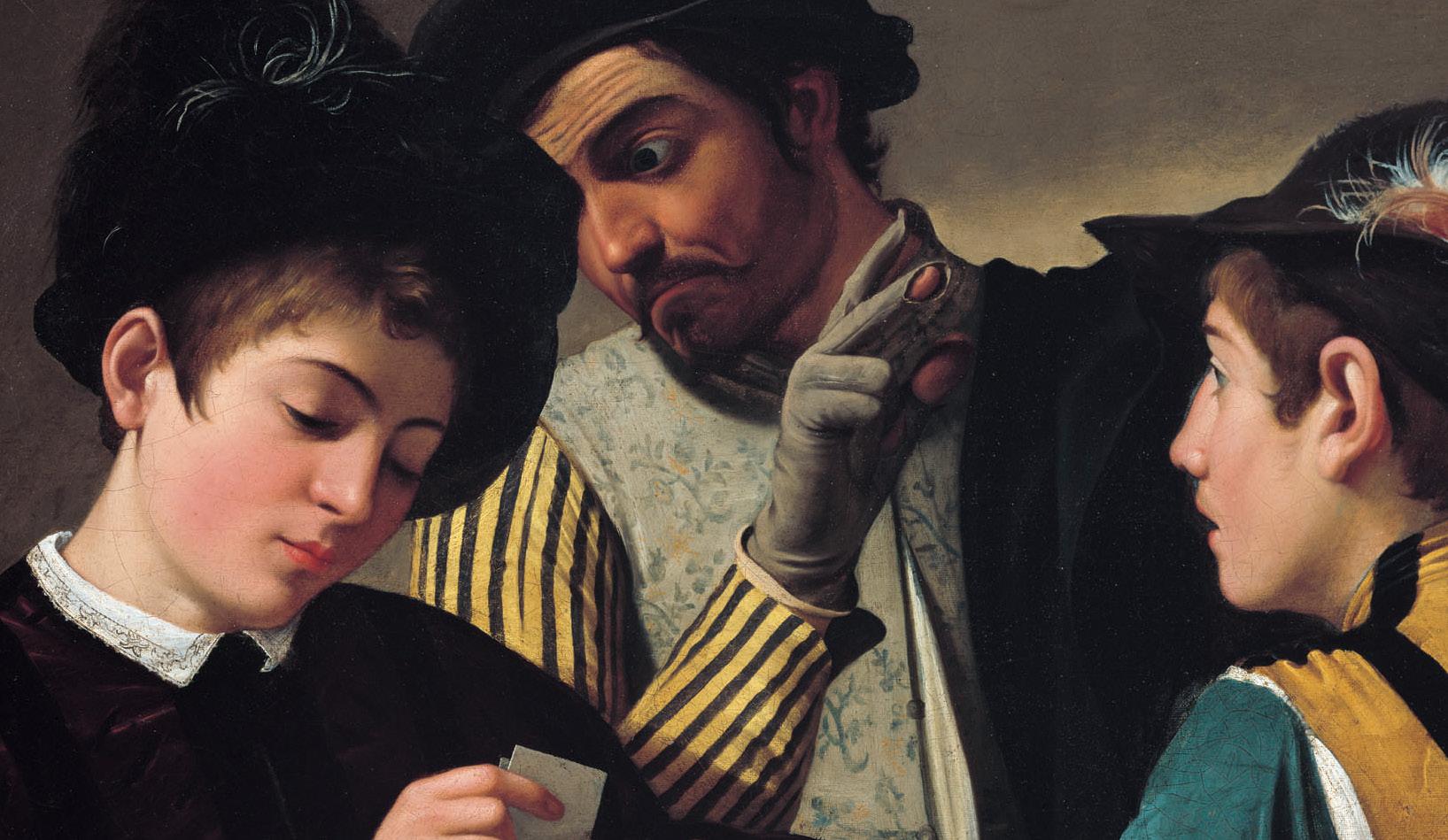
Biographical accounts describe him as a notable brawler, stumbling from one pub to the next after finishing a big commission, looking for (or at least, consistently finding) tiffs—altercations both conversational and physical. His temper was notorious: he’s said to have been arrested for tossing a plate of artichokes at a waiter, throwing stones at the police, cutting a rival’s cloak.
It was more than ill manners—in May 1606, about 14 years after he first arrived in the city, he killed a man, possibly by accident, during a fight over a tennis match (or perhaps it was over a woman— historians aren’t quite sure). He fled Rome and a death sentence issued by the pope.
“A contemporary of his named Peter Paul Rubens was a sort of
good boy who went to church every day and worked for the Spanish powers that be in Flanders at the time,” Nichols said. “In other words, Rubens was the perfect honor student. Caravaggio was not.
“He was an individual that plainly had an irregular, atypical, noticeably unusual personality. He was an outlaw, he ran from his actions, and he was certainly in love with his sword. But I wonder if he was seeking redemption, too, in his paintings, especially those that came after the murder.”
Real-life absolution never came; he sought but couldn’t secure clemency, fleeing to Malta, then Naples, and finding trouble in both places. On his way back to Rome to seek a papal pardon, he died from illness. He was 38 years old.
Caravaggio’s life was undesirable— few would aim to emulate its storminess. His brushstrokes, though, inspired artists of his day throughout his part of the world— French, Dutch, Spanish, and Italian painters all counted him as an influence.
The influence, though, extended past genre scenes. The distinctive use of light and shadow that made Caravaggio’s depiction of biblical tales so arresting was emulated, as well. Hendrik ter Brugghen, whose The Supper at Emmaus (1616) will appear in the exhibition, was a leading Dutch painter of religious subjects in the Caravaggesque style. He employed dramatic contrasts inspired by Caravaggio.
Other works from the permanent collection will include Artemesia Gentileschi’s Lot and his Daughters (about 1636-1638) and Jusepe de Ribera’s Portrait of a Musician (1638). They’ll appear alongside two other works by Caravaggio—The Musicians (1597)
and Martha and Mary Magdalene (about 1598).
The painter’s existence was short and notorious. But in less than four decades, and lacking any adherence to the ordered lifestyle we might advise today, he left an imprint on the art of the Western world, a long afterlife in the galleries and halls of museums and churches around Europe and the United States.
The Brilliance of Caravaggio: Four Paintings in Focus is on view January 20 through April 14, 2024 at the Toledo Museum of Art. The exhibition is free for members and $10 for nonmembers. For more information, visit toledomuseum.org.

“In that dichotomy of idealism versus naturalism, for the first two or so decades after Caravaggio’s death, naturalism dominated,” Nichols said. “Rome was a destination for French artists and Netherlandish artists, as well as Spanish artists. They copied Caravaggio’s technique, his style, even his subject matter.”
In the exhibition, paintings from TMA’s collection will be shown alongside the troubled master’s works, reflecting the stimulus that Caravaggio provided to his contemporaries. Valentin de Boulogne’s Fortune-Teller with Soldiers (about 1620) features a lively scene of soldiers drinking while one has his fortune told—and his ring stolen—by a fortune teller, a familiar genre scene (see: The Cardsharps).
“If he wanted to paint a face that was in anguish, he did it so convincingly as to leave no doubt of the emotion in the frame.”
Since 2016, Alan Iwamura has played with color and form to create the Toledo Museum of Art’s holiday goblet. The unique annual tradition, inspired by the stellar goblets in the Museum’s collection (some dating as far back as 1100), challenges the glass artist with its delicate shape. “Goblets are one of the more challenging objects to pursue as a glassmaker,” Iwamura said. “The execution is very quick and precise; the glass itself is thin and dainty. It’s an object I think many glassmakers aspire to make well.” Iwamura meets that challenge for the seventh year with his emerald-green and brilliant gold creation, inspired by the natural world and its associations with the refreshing, the tranquil, and the positive. A limited-edition run of only 50 goblets will be made, each signed by the artist. $195.00 each.
The Museum Store featuring Collector’s Corner provides one of the Toledo area’s most uniquely delightful shopping experiences. Browse original art by internationally renowned artists, Japanese stationery, handmade jewelry, art books, children’s dolls, quilt kits and handkerchiefs, postcards—there’s something to enchant you at any budget. This season, we explore the work of one of our own staff members whose creations make beautiful gifts.

Open now • Gallery 1
Sixty-five years of African art collecting and exhibiting at the Toledo Museum of Art comes together in this new gallery installation.

Featuring thirteen exemplary works ranging from the earliest to the most recent acquisitions, the display invites viewers to appreciate the permanent collection as both an example of African innovation and as an outgrowth of evolving European-American ideas about African culture.
Open through Nov. 26, 2023
The natural dawn chorus is slowly taken over by artificial birds in Ginsberg’s stirring, immersive installation that uses artificial intelligence as its medium. Tickets are free for museum members and $10 for nonmembers.

Open through Sept. 1, 2024
ReGift recreates, at three-quarters life-size proportions, a diorama of the parlor in TMA founders Edward Drummond Libbey and Florence Scott Libbey’s Old West End home. It also symbolically reinstates works once owned by TMA, emphasizing Florence’s involvement in building the museum’s (and Toledo’s) legacy.

Open through 2024
Explore new ways of understanding complex histories through the themes of mythmaking and religion. More than 80 objects from TMA’s collection offer a powerful lens for discovering a multiplicity of American stories and voices.


Jan. 20–April 14, 2024
Four important paintings by Caravaggio will be in conversation with works from TMA’s collection, marking the first time in more than a decade that four paintings by this renowned Italian master have been on view together in the US. Tickets are free for museum members and $10 for nonmembers.

Mar.–June, 2024
Far more than a muse or an icon of a single decade, Marisol created art that in radical ways addressed urgent issues of the 20th (and now 21st) centuries. While celebrating her satirical and deceptively political sculptures and self-portraits of the 1960s, the exhibition also assembles lesser-known areas of her practice for the first time.
Inspired by works in the museum’s modern and contemporary collection, students in this class will create fluorescent and glowin-the-dark art! From sculptures lit by blacklight to paintings that glow, learn all about how light—or lack of light—can impact the art-making process. This class is five Saturdays beginning Oct. 21, 1–3 p.m.; course cost is $95 for members and $105 for nonmembers. Course Code: 23FYPS202
This class focuses on fabrication methods using sheet metal, wire, and soldering to create your own artwork. No experience necessary. Class is ten Monday sessions beginning Sept. 11, 6:30–9:30 pm; cost is $320 for members and $350 for nonmembers. Course Code: 23F9AE110A
Just in time for the holiday season, gain the skills to print your own greeting cards for special occasions in this exciting oneday workshop. Printmaking is an artistic process where artists transfer an original image onto a piece of paper (or another medium). The workshop takes place Friday, Nov. 10, 6–8 p.m.; cost is $40 for members and $45 for nonmembers. Course Code: 23FAWS202A
14–18)
Learn the basics of hot shop glassblowing in this course. Students will draw inspiration from the collection to build techniques in the hot shop. No experience required! Please note this class can be physically strenuous. The two-day workshop takes place on Sept. 16 and 17, 10 a.m.–1 p.m.; cost is $160 for members and $180 for nonmembers. Course code: 23FTPS100
For more than a century, the Toledo Museum of Art has offered classes for every age, every experience level, and every schedule. Students visit the galleries, learn about some of the iconic works of art, and combine inspiration with their own creativity.
Looking for a creative outlet for the kids, an experiential gift for a friend, or an opportunity to learn something new? You’ll find it here. This is just a sampling of the classes being offered this semester— visit toledomuseum.org/ education/classes for the full list.
The museum has scholarship opportunities available for youth and adult students! Awarded based on financial need, they cover 100% of tuition fees for most classes. It’s as easy as submitting a simple application form. Check out our website for more details: toledomuseum.org/ education/classes.

Art Matters Staff
Director of Brand Strategy: Gary Gonya
Feature Writer: Alia Orra
Copy Editor: Stephanie Rozman
Design: Allison Blankenship, Aly Krajewski
Send comments, questions, or inquiries to Gary Gonya ggonya@toledomuseum.org
© 2023 Toledo Museum of Art. All rights reserved.
Toledo Museum of Art
P.O. Box 1103
Box 1103 Toledo, Ohio 43697
Toledo, Ohio 43697
Forwarding Service Requested
Forwarding Service Requested © 2022 Toledo Museum of Art
© 2023 Toledo Museum of Art
ON THE COVER
K ikuo Saito (Japanese-American, 1939–2016) 2002, Acrylic on canvas
The artist’s process was rhythmic and performative in nature. He often painted on the floor, moving around the canvas to create the emotive strokes of color that result in the composition’s dynamic visual experience.
On view: Gallery 4
Josiah McElheny (Born 1966, Boston, Massachusetts)
Pressed, colored prismatic glass and stainless steel, 2019
38
A crescent-moon shape comprised of dozens of pressed-glass tiles of various shades of blue. The entire work is held in place by a stainless-steel frame. This piece is a recent acquisition, thanks to the Georgia Welles Apollo Society.
On view: Sculpture Garden
